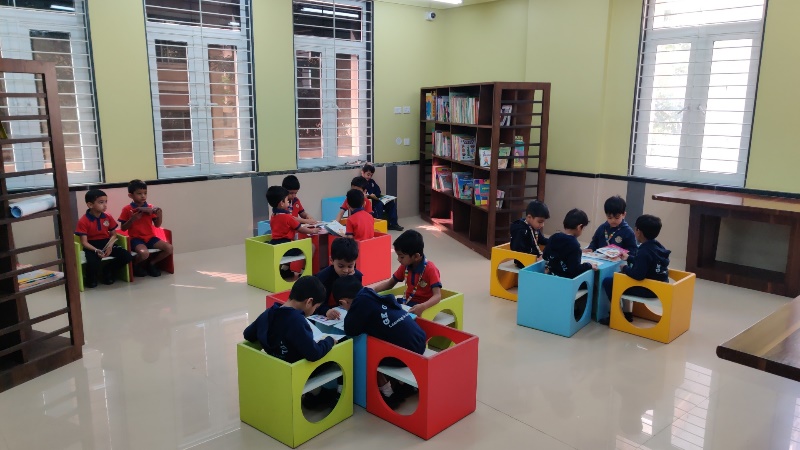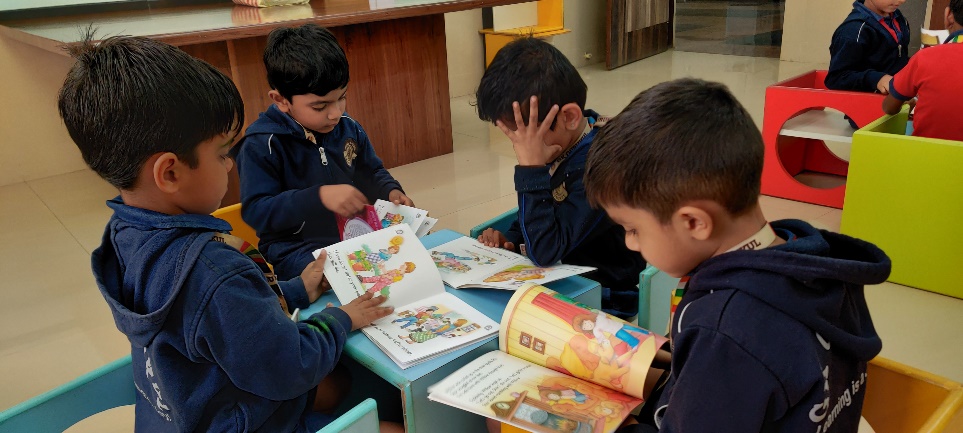“THE SOUND OF THE RAIN NEEDS NO TRANSLATION” – Zen Proverb.
Sound is the most important means of communication. The baby’s sensitivity to sound starts as early as when it is 18 weeks in the mother’s womb. Sound, just like touch brings many things together. It is a form of recognition of being cared, loved and gives a sense of being protected. The mother’s soothing cradle song puts a baby to sleep, her hush hush sound makes the baby feel safe or her firm voice tells the baby something is off beam, the child can separate the sound of a car horn to their father’s car and many more. All of these happens over the time of continuous hearing and relating to the sounds. Be it animals, birds or us humans, sound is the most important form of communication.

As the child is growing, they perceive, recognize, realize and capture many things happening around them and try to understand the relativeness of sound and its entity.
As children step into school, they catch new noises, sounds, hums that resonate in and out of the class the entire time they are in school. The child tries to emulate these new sounds and mimic them as to their understanding. Here the teacher teaches new things based on music and beats. Then the child starts to recognise the English letters and the related sound to letters learnt.
These new, added sounds, for the letters known as phonic sounds are well filled through lots of methods like songs and rhymes, picture stories, games like scavenger hunt, alphabet ball, story cards, blends, diagraphs and in many other creative ways by the teacher. The phonic sounds help the child hear, identify and distinguish letters with the help of phonic sounds. It can be one of the ways of teaching children how to read and write. It is like a code language with sounds for each letter. As the child decodes the sounds, they get a new word, fun way to inculcate reading habit, a teacher can begin at school and parents at home can talk to the child and read along.
Nearly, all words in English language has vowels “a, e, i, o, u” irrespective of the recurrence and position of the vowel in the word. When the child starts with an early education, he/she learns words with vowels first along with phoneme sounds of the letter (consonants and vowels) for instance when a child is taught the sounds for the letters s, a, t, p ….they then build up on sounds and form new words like:” tap, sat, pat”. When the teacher helps the children with phonic or phoneme sounds from the beginning and helps to the match the sounds of spoken English with individual letters or group of letter, blend the sounds of letters together and help them to learn unfamiliar or unknown words by joining their sounds and then learn to pronounce that word it gives a sense of happiness and accomplishment to the children and they try to form new words with this technique, which will later develop into formation of sentences helps them to further their vocabulary and start to read short sentences and stories.
Phonic sounds are like a tool to the new readers wherein they learn a lot of unfamiliar words It builds their confidence; it helps with spelling among many other positives. A parent too, can help their child to develop the love of reading by starting with picture books and help them frame sentences, for a start and make reading experience fun and engaging for the children. This leads to overall development of reading and writing skills.
Depending on phonetic approach always for learning do have its drawbacks too, as it does not focus on non-phonetic words, which can be frustrating to the new readers, it also fails to encourage understanding as the focus is on the sounds rather than understanding the word or sentences.
Nonetheless, “READING IS TO THE MIND, WHAT EXERCISE IS TO THE BODY”, since a child starts communicating and understanding all forms through sounds, learning to read with the help of phonic sounds for a start and with the co-help of teacher and parents, a child can be introduced to sounds of letters or phoneme sounds which covers large number of words for their age, where it helps them to get going with short story books which will help them to become avid readers at an early age.


